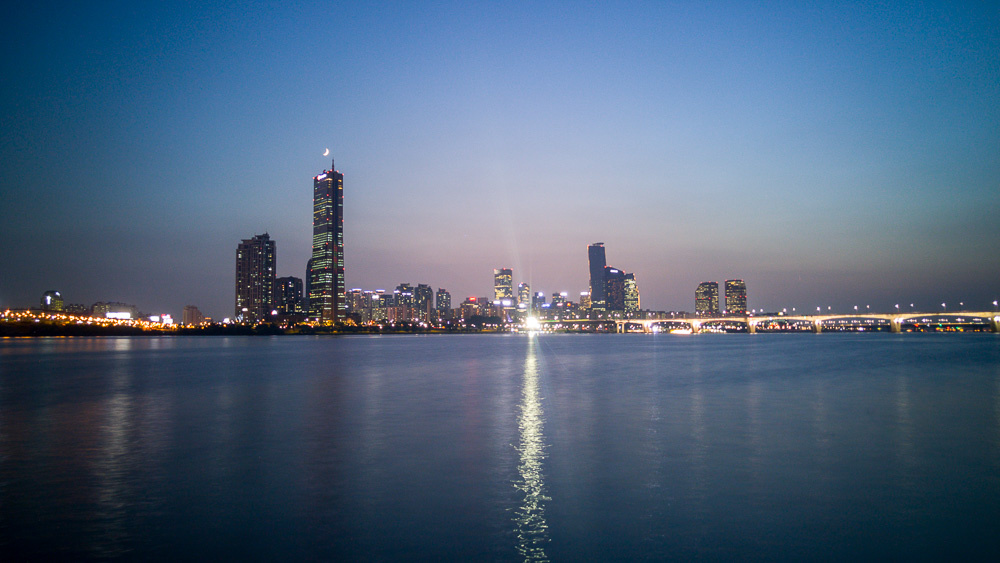Inspired by the original iPhone Fashion Shoot here at FStoppers, I decided to attempt some photographs that I would normally pick up an SLR or high-end compact with manual controls for, and see how the G4's camera would hold up. I picked a couple of stress tests and a couple of photographs I thought would be fun to attempt and set out to make them work with the G4. Of course, the lack of variable focal length and quick autofocus were limitations, so I tried to pick things that would be easy to see the image quality through.
Before we get started, a couple of things I won't be showing here are ISO performance and dynamic range, because, well, they're really not worth looking at. Like any sensor of that size, a couple of stops above base ISO results in noisy images. Even the shadows in a well-exposed image are noisy at base ISO. Dynamic range, despite the ability to shoot in DNG format, is very similar to working with the JPEG files.
So, let us begin. The subjects I chose were food, a couple of different long exposures, and a flash-only scene. For all subjects, I shot DNG files so I could bring them up in Lightroom with a minimum of processing done on the camera's end. The biggest benefit of the raw files that I can see is that LG's default JPEG processing oversharpens and oversaturates for my taste.
Food
First up, I started with a simple shot: window-lit food. I put together bacon and eggs for breakfast and set up a quick shot in the window of our Seoul apartment. The tantalizing smell of bacon in the morning meant I really didn't have a lot of time to get my shot: a quick bit of styling and dialing in my exposure manually to ensure consistency and I was away. For web files, there's plenty of detail, but upon zooming in, you see that the 16 MP are more of a gimmick than anything else. There isn't enough detail resolved to really make use of them. The lens is approximately equivalent to 28 mm, which is a little wide for my taste when shooting food. It meant I had to keep all of the plates very close together.Daytime Long Exposure
I was shooting a beach scene on a recent trip to Australia and it seemed like the perfect time to test the G4. The f/1.8 lens provides us with one hurdle to overcome: it isn't a variable aperture. So, in order to do any sort of long exposure, we need to cut down the light by other means.Read: The Sony's compact camera is fantastic
Enter "Frankenphone." I taped my ND400 over the lens of the phone and light-sealed it using gaffer's tape. By doing this, I was able to get a full second exposure later in the day and shoot a few long exposures over the ocean. The highlights look fantastic here and the phone retained a good amount of detail throughout the scene. The shadow areas, however, did get extremely noisy. I made a 10x18 print of this and put it next to a print of the same scene from my Fuji X-T1. Of course, the X-T1 has superior lenses and a much larger sensor, so there is no competition. However, from a viewing distance of 3 meters, I was unable to see much of a difference.

LG G4, 1", f/1.8, ISO 50, ND400
Night Long Exposure
This was a little easier to get a long exposure. However, as I still wanted to smooth the relatively calm waters of the Han River in Seoul, an ND8 filter was used to get a 15 second exposure. Here, I also discovered a use for the voice activated shooting I had previously thought to be a gimmick. By switching this mode on, I was able to say "smile", "cheese", or, interestingly enough, "whiskey" to have the phone take a photo without requiring me to touch it. Manual focus also enabled precise focus to be locked so the phone wouldn't hunt as I asked it to take pictures. The resulting image looks great on the phone screen, but when brought up large on a monitor, hot pixels become visible very quickly all over the image.
LG G4, 15", f/1.8, ISO 50, ND8
Flash
One of the more novel uses of the ability to do long exposures is the ability to use strobes to illuminate your subject. I say novel, because the simpler option would be to use hot lights, as in the iPhone Fashion Shoot. However, I thought it would be fun to attempt to freeze a droplet using strobes. I thought. Sitting in the dark, opening the shutter, trying to keep the droplets falling in the middle of the cup, and firing the flash at the right time was not my ideal evening in, but I managed to capture a couple of droplets. Note that this is a black cup and I kept the shadows purple to show you the color-shift, even at base ISO.
LG G4, 4", f/1.8, ISO 50, Softbox to camera right (manually triggered)
What I Liked
- This is quite a step forward in quality for a phone camera.
- Images are sharp and contrasty (sometimes too much for my liking).
- The inclusion of manual controls make it a fun toy to play with and a great light meter for film shooters.
- Voice triggering works well for long exposures.
What I Didn't
- Lots of hot pixels with longer exposure.
- Noise gets ugly really quickly on the small sensor (to be expected).
- Focusing could be better in low light.



0 comments:
Post a Comment
What's On Your Mind?